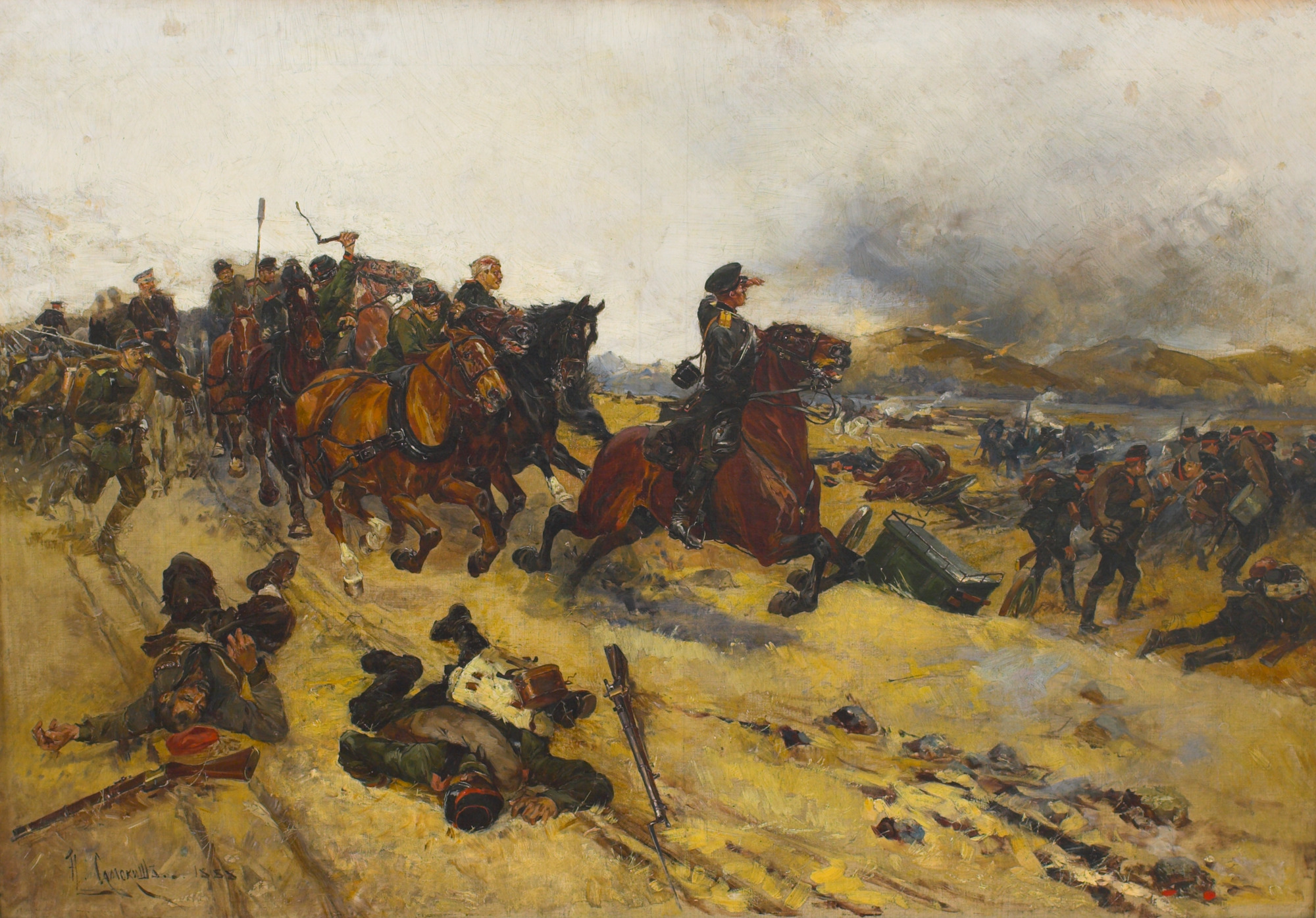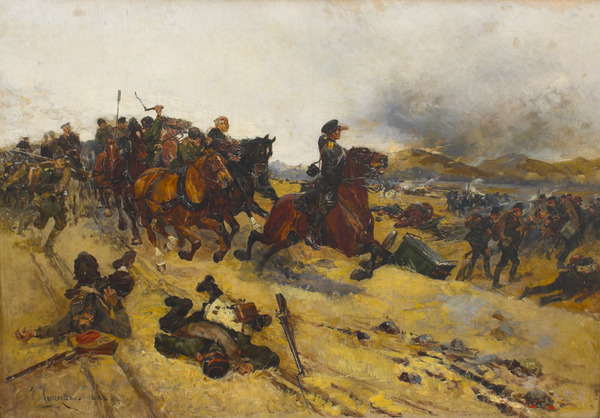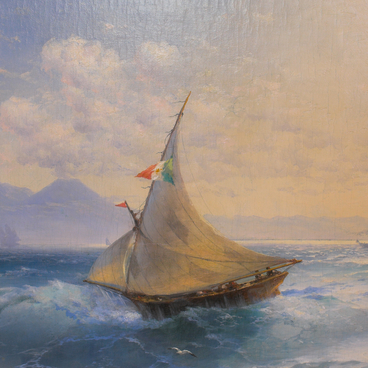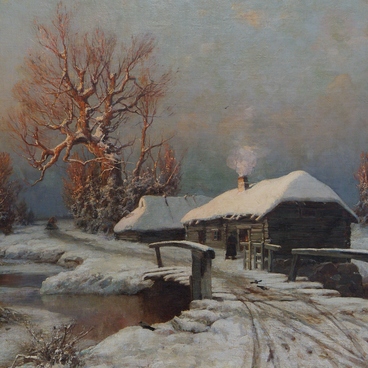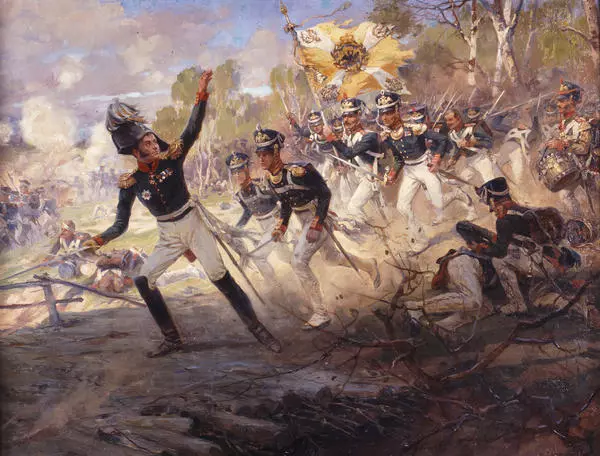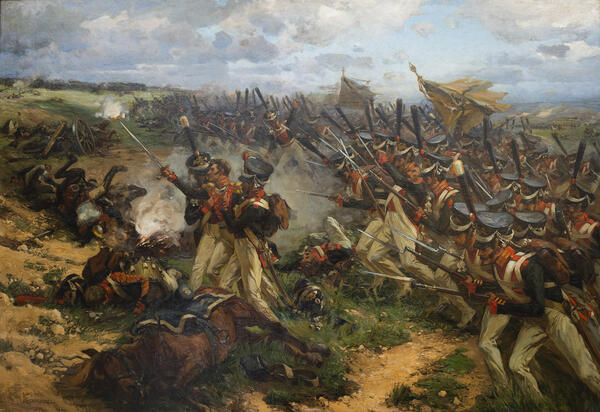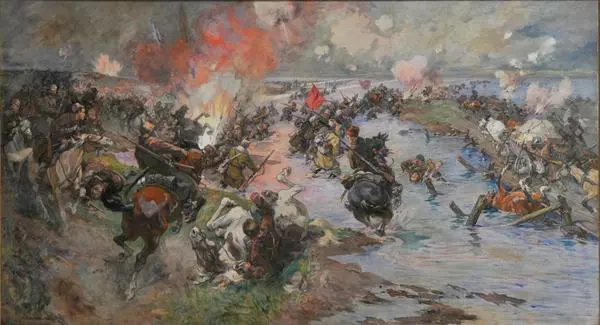Nikolay Samokish was a Russian and Soviet battle painter. He also worked in the animalistic genre, the main motif of his paintings in this genre were animals.
Nikolay Samokish studied at the Imperial Academy of Arts in the class of battle painting with Bogdan Villevalde and the famous teacher Pavel Chistyakov. Samokish was considered a talented student: he was awarded two small gold medals for his paintings ‘The Return of Troops to their Homeland’ painted in 1881 and his ‘Episode from the battle near Maly Yaroslavets’ painted in 1884. For his diploma painting ‘Russian cavalry returns after attacking the enemy at Austerlitz in 1805’, the painter was awarded a large gold medal and the title of 1st class artist.
Since 1887, Nikolay Samokish was a battle painter in military units. Upon the request of the military department, he made drawings dedicated to the maneuvers of cavalry regiments and their history. In 1888, the artist went to the Caucasus to collect materials for the paintings which the Tiflis Military History Museum had ordered from him. One of them, called ‘the Battle near Avliyar’ was dedicated to Avliyar-Aladzhin battle which ended in a brilliant victory of the Russians. This painting made Samokish famous in Russia as a batalist.
While the artist was preparing to paint this picture, he created another artwork ‘Departure of the squadron to the position’, which depicted one of the imaginary episodes of the battle near Avliyar. The ‘preparatory’ artwork featured high dynamism and deep attention to details for better historical authenticity of the event. The painting is made using the ochre tones: the battle took place in early autumn. And the dimmed shades and grayish haze show the smoke and dust, produced by the cavalry. Nikolay Samokish paid great attention to the landscape where the battle took place - an area with steep rocky slopes and deep ravines.
The name given to this picture — ‘Departure of the squadron to the position’ was given arbitrarily: the Museum received it only in 1958, and before that it had been stored in the Pushkin Drama Theater, known under the name ‘Tachanka’ and listed in the books as ‘Accessories’.
Nikolay Samokish studied at the Imperial Academy of Arts in the class of battle painting with Bogdan Villevalde and the famous teacher Pavel Chistyakov. Samokish was considered a talented student: he was awarded two small gold medals for his paintings ‘The Return of Troops to their Homeland’ painted in 1881 and his ‘Episode from the battle near Maly Yaroslavets’ painted in 1884. For his diploma painting ‘Russian cavalry returns after attacking the enemy at Austerlitz in 1805’, the painter was awarded a large gold medal and the title of 1st class artist.
Since 1887, Nikolay Samokish was a battle painter in military units. Upon the request of the military department, he made drawings dedicated to the maneuvers of cavalry regiments and their history. In 1888, the artist went to the Caucasus to collect materials for the paintings which the Tiflis Military History Museum had ordered from him. One of them, called ‘the Battle near Avliyar’ was dedicated to Avliyar-Aladzhin battle which ended in a brilliant victory of the Russians. This painting made Samokish famous in Russia as a batalist.
While the artist was preparing to paint this picture, he created another artwork ‘Departure of the squadron to the position’, which depicted one of the imaginary episodes of the battle near Avliyar. The ‘preparatory’ artwork featured high dynamism and deep attention to details for better historical authenticity of the event. The painting is made using the ochre tones: the battle took place in early autumn. And the dimmed shades and grayish haze show the smoke and dust, produced by the cavalry. Nikolay Samokish paid great attention to the landscape where the battle took place - an area with steep rocky slopes and deep ravines.
The name given to this picture — ‘Departure of the squadron to the position’ was given arbitrarily: the Museum received it only in 1958, and before that it had been stored in the Pushkin Drama Theater, known under the name ‘Tachanka’ and listed in the books as ‘Accessories’.
